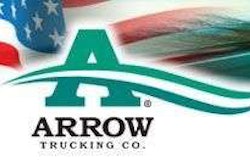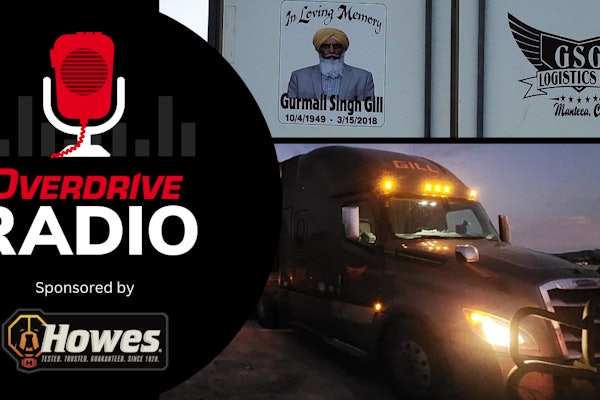Take Charge, NASCAR
Despite Carl Edwards’ admission that he intentionally crashed a fellow driver, he didn’t face any real punishment by NASCAR
By Kay Bell
Attention, NASCAR drivers. You might want to talk to Carl Edwards. No, not about his aggressive driving.
What you fellow racers need is some information about his sponsor. You know, that duck and the injured-and-can’t-work insurance company it represents.
Joey Logano was involved in two cautions during the March 8 race in Atlanta — the third caution of the day for an incident with Carl Edwards and Brad Keselowski early on during lap 41, then again when he hit the wall on lap 159.You might need the extra coverage since NASCAR apparently has decided that anything goes. That certainly seemed to be the message when the sport’s honchos decided that Edwards deserved no more than a three-race probation for intentionally wrecking Brad Keselowski during the March race at Atlanta.
I admit I was thrilled when NASCAR announced that they’d let boys be boys and the garages police themselves. Fantastic! I envisioned close racing, some fender rubbing, a little of the bump-and-run of years gone by. I was even looking forward to a little pit lane shouting and perhaps a push or two after guys tangled on the track.
And yes, I’ve watched racing long enough to know that “racing deals” are sometimes premeditated. But I was stunned at NASCAR’s reaction. A three-race probation.
That’s right, probation, not suspension, even though Edwards publicly admitted he wrecked Keselowski. Did he get off so lightly because he was honest in saying his hit, which sent Keselowski flying upside down and into the fence, was intentional?
Or has NASCAR gone totally over to the dark side?
Before the Daytona and Talladega races, the pre-race hype is all about the possibilities of “the big one” that could take out half the field. Now, with the history between Keselowski and Edwards culminating in that spectacular flip, maybe NASCAR is getting just what it wanted.
As the sport struggles to fill grandstands from Atlanta to Fontana and keep viewers in front of their televisions, the wreck and its lack of consequences at least got some attention beyond hardcore fans.
And NASCAR has finally admitted, at least implicitly, that it’s never been able to put any teeth into its punishments. For too long, the sport has used “extenuating circumstances” as a way to avoid penalizing its stars or angering the associated sponsors.
There’s also a distinct possibility that who was wrecked and who did the wrecking was as big a consideration as the actual act. Edwards drives for the powerhouse Roush organization and is a frequent face on race-related programs. And though Keselowski drives for the also-impressive Penske group, few among us could pick him out of a lineup.
It’s no secret that some drivers get away with a lot more than others. How many times have you seen a driver given probation and then NASCAR turn a blind eye when he violated the terms? Heck, for a while Tony Stewart was the king of the double-secret probations.
So maybe the three-race suspension, while disappointing, isn’t that surprising.
Some insiders speculate that NASCAR dealt more harshly with Edwards behind closed doors. And NASCAR President Mike Helton, at the probation press conference, did at least say there is a line that once drivers cross, NASCAR will step in to “maintain law and order,” but he didn’t elaborate. I hope that’s true, because I hate to think that the sport’s leaders would so blithely accept even more irresponsible and potentially deadly on-track behavior.
True, NASCAR had painted itself into a corner. You can’t tell the boys to take care of their disagreements themselves one day and then publicly punish them the next without looking like fools.
But for the good of the sport and, more importantly, the safety of the drivers, crews and fans, NASCAR should have swallowed its pride and admitted it was wrong. It should have fined Edwards and docked him points.
Now, given this simple slap on the wrist, what will it do when the next ticked-off driver thinks, “Hey, it worked for Carl,” and dumps the object of his anger?
This also opens the door for a multicar operation in a tight championship race to send its also-ran car, or make a deal with a perennial backmarker, to “nudge” someone into “a racing deal” wreck since a mere probation is the penalty. Many have compared today’s NASCAR with professional wrestling; it now looks more like the NHL with its insistence on using goons.
More frightening, what will this do when someone’s livelihood or life is ended because another boy on the track truly did act like an immature, dangerous child?
The beauty of sports is that their rules apply to all competitors. It’s time for NASCAR to be the good parent and set reasonable — but strict — rules and enforce them.
Until then, I’m going to have to second Kyle Petty’s assessment of the Edwards probation call: “I am deeply saddened by the decision that NASCAR made on this issue. I love this business, will always support it, but not this.”
Loose lugnuts
The wing takes off: NASCAR does occasionally admit a mistake. Take that huge, ugly rear wing, please! It came off the cars at the March 28 Martinsville race. The driver who’s probably the happiest with the return to the old spoiler is Dale Earnhardt Jr. According to an analysis of wins during the 92-race rear-wing era by HamptonRoads.com NASCAR writer Dustin Long, the winningest drivers under this setup were Jimmie Johnson with 21 trophies and Kyle Busch with 13. Junior had exactly one win with a rear wing car, and that was a fuel-mileage win in 2008.
Fisher, Rahal join forces: Before that brunette with the provocative Internet domain company ads was getting all the media ink, there was another racing sweetheart. Sarah Fisher first appeared on the national scene as a 15-year-old high schooler profiled on NBC’s Today Show. She signed her first open-wheel contract in 1999 and a year later, at age 19, qualified for her first Indianapolis 500, becoming just the third female racecar driver to compete. Now she’s a car owner and she’s hired Graham Rahal, son of open-wheel legend Bobby Rahal, to run at least two Izod IndyCar Series races this year. The 21-year-old Rahal finished seventh in last year’s Indy car standings.
Danke schoen for nothing: Speedway Motorsports chairman Bruton Smith and Wayne Newton, Mr. Las Vegas, are two guys I never would have put together. And that’s probably what both are wishing right now. Smith is looking to foreclose on Newton’s estate, claiming the singer is delinquent on a $3.35 million loan. The Las Vegas Sun reported that Newton and his wife approached Smith in 2006 about personally guaranteeing a bank loan that would allow them to restructure debt. The loan was to have been repaid last May, but wasn’t. In October 2009, Smith bought the loan and demanded his money. Not getting it, Smith is now looking to get the house.
Kay Bell is an Austin, Texas-based writer. When she’s not yelling at her television during NASCAR races, she blogs about taxes and other financial topics at www.dontmesswithtaxes.typepad.com.










